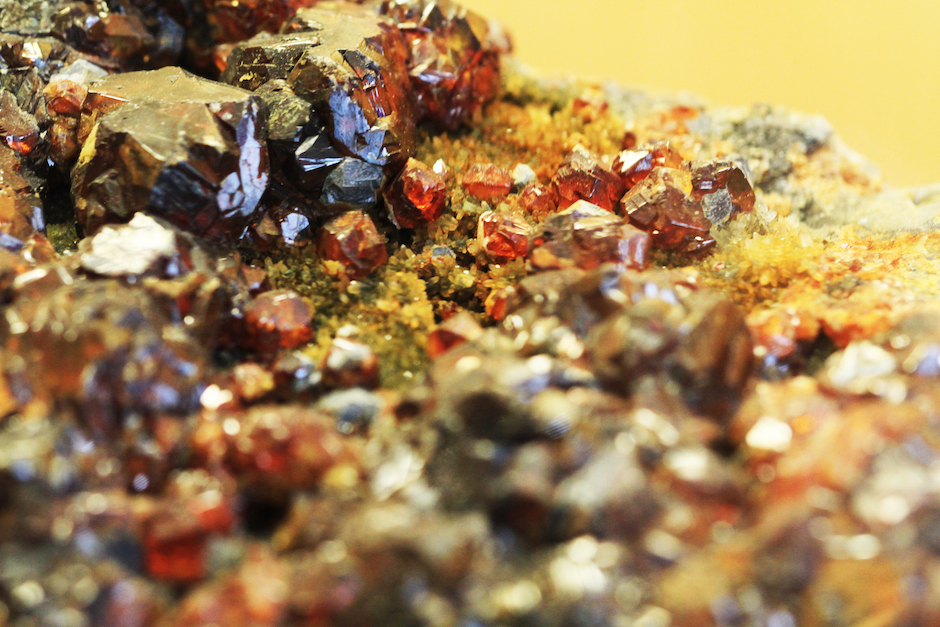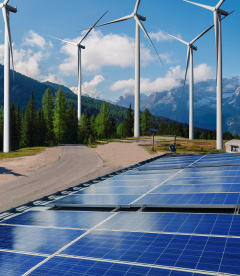Where does Nickel come from and how do we get Cadmium?
Technology
November 21. 2022
3 min.
Nickel-cadmium batteries naturally require both nickel and cadmium. Two metals that are quite similar, yet also very different, if only in where we find them and how we get them.

Nickel, just like cadmium, is a transition metal, which is a category of elements whose valence electrons are located in the d sub-shell. This is why they often form complex compounds. Both are highly resistant to corrosion and soluble in certain acids. But nickel and cadmium are also different in many ways, starting from where they are found. Being a relatively light element, nickel is about 50,000 times more common in the universe than cadmium. The Earth’s crust contains about a thousand times more of it, which is why no one has ever heard of a cadmium mine.
In nature, cadmium is most often found as an additional element in ores, or in the form of minerals. These include greenockite and hawleyite, which is chemically cadmium sulphide – meaning about 80% of it is cadmium. However, these minerals are very rare and essentially only gathered for collection purposes. The main industrial sources of cadmium are ores containing zinc such as zinc sulphide, or sphalerite, and wurtzite, which is a modification of sphalerite with an addition of iron. These ores, however, only contain tenths of a percent of cadmium, or in rare cases, a few percent.
This means that cadmium is more of a by-product of the mining and refining of zinc ores from which it is extracted by leaching in sulphuric acid and electrolytic separation, or through fractional distillation due to cadmium’s relatively low boiling point. The main producer is China followed by South Korea, Japan, Canada and Kazakhstan. About one tenth of the world’s consumption of cadmium comes from secondary sources, mainly dust created during the recycling of iron and steel scrap.
Born in fire
Unlike cadmium, nickel can be found in nature even in the form of a pure metal that arrived on Earth as part of an iron meteorite. While this is generally quite rare, the currently largest mined source of nickel ores is the Sudbury Basin in Canada, which accounts for about 25% of the world’s production, and which is one of the oldest and largest impact craters on Earth. In ancient history, a comet with a diameter of up to 15 kilometres crashed here and left behind a magnetic anomaly and a rich deposit of nickel and other metals.
The Sudbury ore is sulfidic, meaning it was created through the crystallisation of melted rock. In this case, the reason was the impact of a celestial body, but most nickel-bearing sulfidic ores were created through the cooling of magma. Besides nickel, they also contain copper, cobalt, and metals of the platinum group, such as palladium or iridium. This means that the same ore (or mine) serves as a source of multiple metals, typically nickel with copper.
While sulfidic nickel-bearing ores need to be mined from hundreds of metres underground, laterite deposits tend to be surface-mined, because these ores are typically found at a depth of a few dozen metres. Laterites were created by tropical and subtropical surface erosion quite recently, roughly from the second half of the Tertiary era to a million and a half years ago. And because the Earth’s plates have not moved around much since then, most of the laterite deposits are still found in the tropics. The largest exporters of laterite nickel include Indonesia, the Philippines, and the Pacific archipelago of New Caledonia. You can learn more about nickel mining in the article Sources of Nickel, its Mining and Recycling.
Because there is no need to dig deep underground, laterite mining is usually cheaper. But even though about 70% of the land-based nickel deposits are laterites, they account for only about 40% of the total volume of production. The reason is that the extraction of nickel from sulfidic ore is about 20% cheaper than extraction from laterites.
Besides the nickel that can be found on land, a similar volume is also freely strewn around the seafloor in manganese nodules-- metallic deposits that can range from a few millimetres to tens of centimetres in size. These nodules can also contain iron, copper or cobalt. The content of metals which are of economic interest in these nodules is, however, fairly low, and most of them are located very deep underwater. Not to mention that their intensive mining would harm the delicate ecosystems at the bottom of the sea.
While the demand for nickel has been sharply increasing, nickel alloys can be easily separated from waste material and then reprocessed. And cadmium is both toxic and carcinogenic. This is why recycling is important for both metals, and in the countries of the EU, the recovery rates for nickel-cadmium cells are approaching 100 percent.
Related articles
Cell-to-cell Separator: A Part as Unspectacular, as it is Indispensable
January 8. 2025
2 min.
View moreWhat else can Electrolyte do
October 10. 2024
2 min.
View moreCutting Energy Purchase by a Third? Perfect Task for Batteries
September 5. 2024
2 min.
View moreWill Sodium replace Lithium in Batteries? It might, but it won't
August 19. 2024
3 min.
expert article
View more



